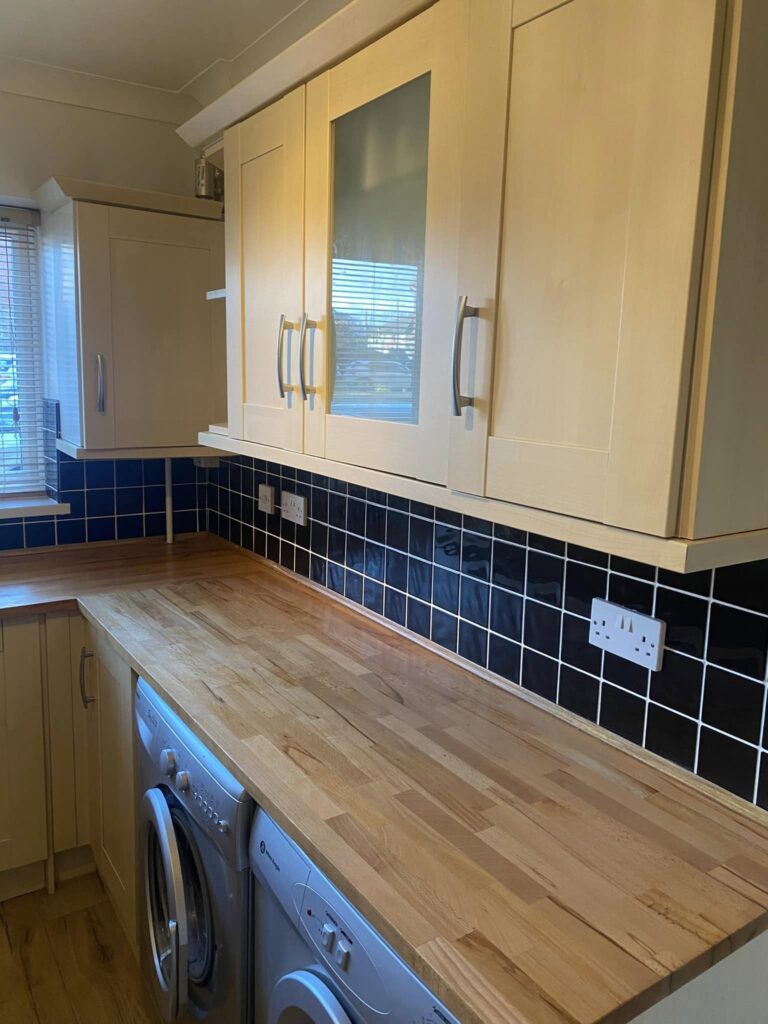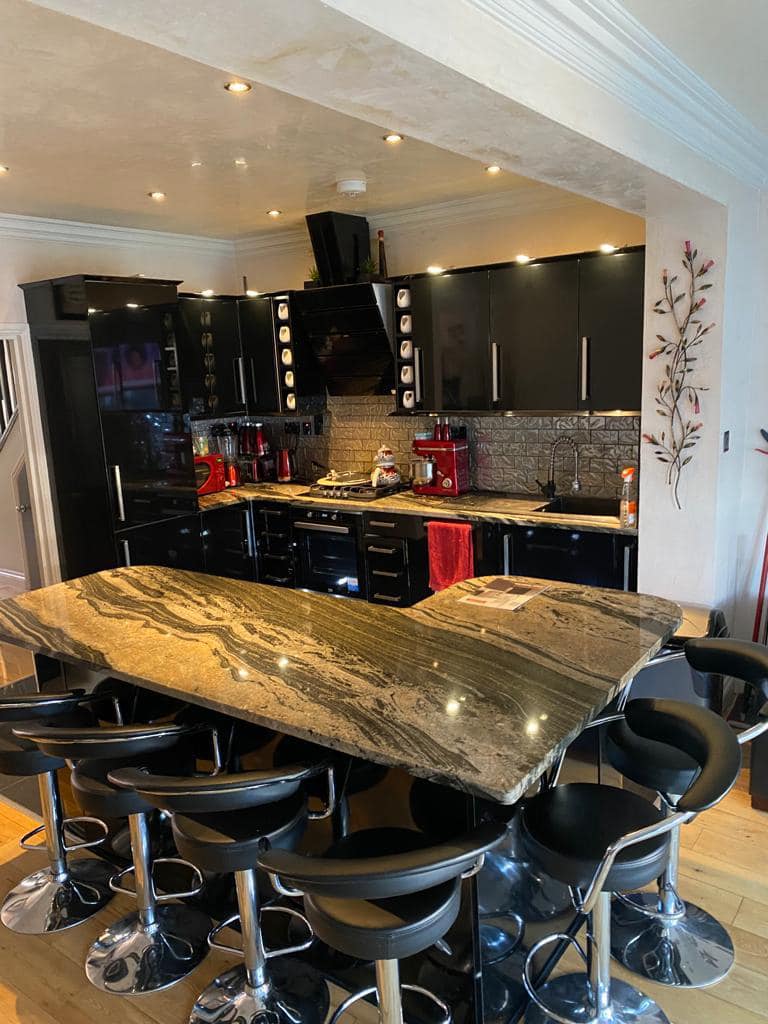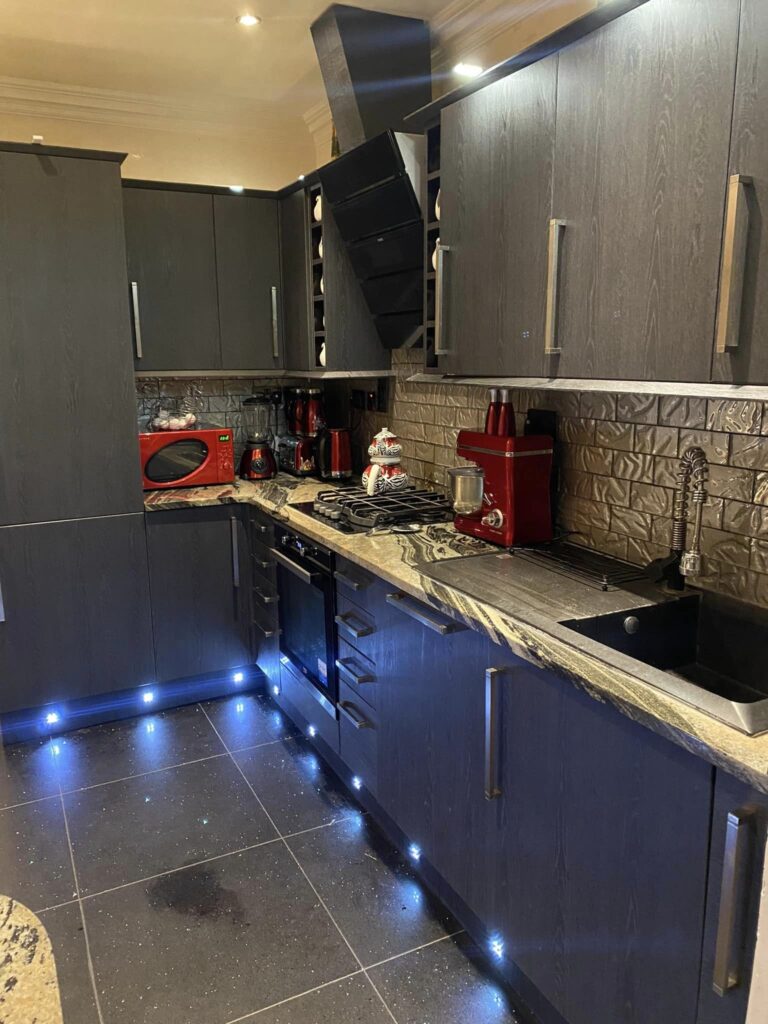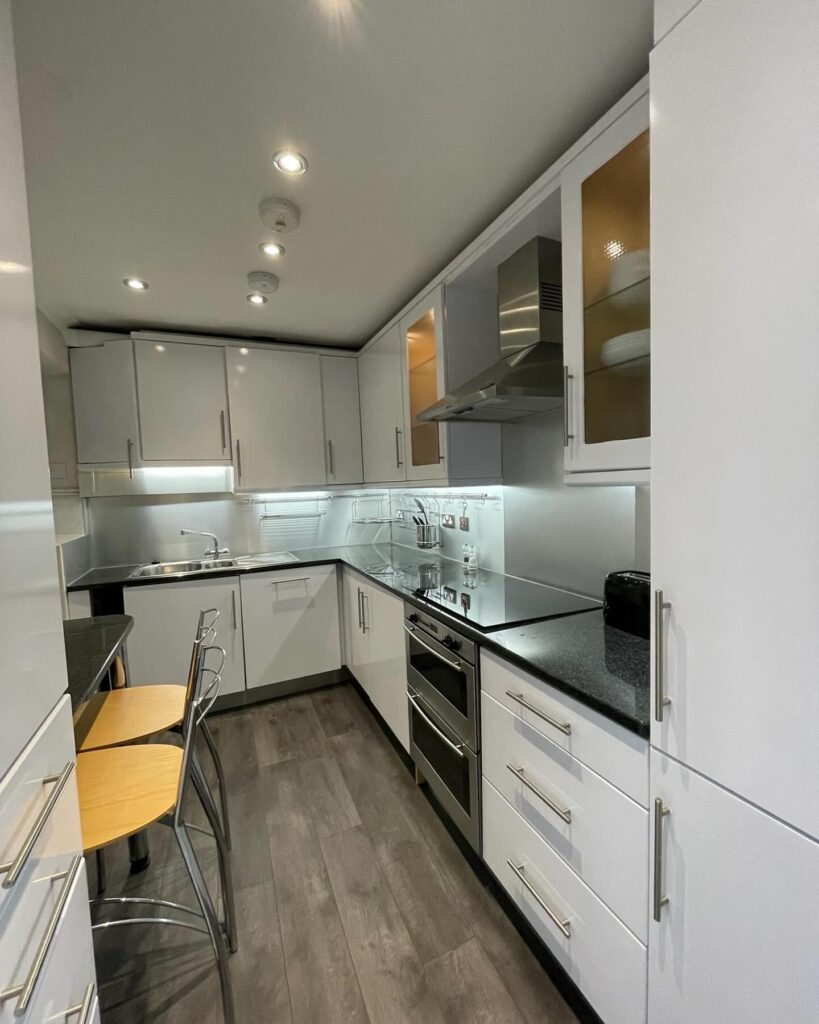
Are you looking to give your kitchen a stylish makeover? Look no further because we’ve got the perfect solution for you – kitchen wrapping! With stunning kitchen wrapping ideas, you can transform your dull and outdated kitchen into a modern and sophisticated space.
Kitchen wrapping involves covering your existing cabinets, countertops, and appliances with a vinyl or stainless steel wrap. This cost-effective solution not only allows you to achieve a new look without the need for a complete renovation, but it also offers a wide range of design options to suit your personal style.
Whether you prefer a sleek monochrome look, a pop of bold colour, or a trendy pattern, there’s a kitchen wrap design to suit every taste. Additionally, kitchen wrapping is a great way to protect your existing surfaces from scratches, stains, and daily wear and tear.
In this article, we’ll explore some stunning kitchen wrapping ideas that will inspire you to revamp your kitchen and make it the focal point of your home. So get ready to unleash your creativity and transform your kitchen into a stylish and functional space with these amazing kitchen wrapping ideas.
Advantages of Kitchen Wrapping
Kitchen wrapping offers several advantages over traditional kitchen renovations. Firstly, it is a cost-effective solution that allows you to achieve a new look without breaking the bank. Kitchen renovations can be expensive, involving the replacement of cabinets, countertops, and appliances. With kitchen wrapping, you can simply cover your existing surfaces, saving you both time and money.
Secondly, kitchen wrapping offers a wide range of design options. Whether you prefer a modern, minimalist look or a vibrant, colourful kitchen, there’s a kitchen wrap design to suit your style. You can choose from a variety of materials such as vinyl, stainless steel, or even wood grain finishes. The possibilities are endless, and you can easily find a design that complements your existing décor.
Another advantage of kitchen wrapping is the ease of installation. Unlike kitchen renovations, which can be time-consuming and disruptive, kitchen wrapping can be done relatively quickly. With the right tools and instructions, you can even do it yourself, saving you the hassle of hiring professionals.
Lastly, kitchen wrapping provides protection for your existing surfaces. The vinyl or stainless steel wrap acts as a barrier, preventing scratches, stains, and daily wear and tear. This means that your kitchen will not only look stylish, but it will also stay in pristine condition for longer.
Popular Kitchen Wrapping Materials and Styles
When it comes to kitchen wrapping, there are various materials and styles to choose from. Let’s explore some of the most popular options.
- Vinyl Wraps: Vinyl wraps are versatile and come in a wide range of colours, patterns, and textures. They are easy to install and can be applied to cabinets, countertops, and even appliances. Whether you want a glossy finish, a matte texture, or a metallic look, vinyl wraps can help you achieve the desired effect.
- Stainless Steel Wraps: If you prefer a sleek and modern look, stainless steel wraps are the way to go. They give your kitchen a professional and sophisticated appearance, resembling high-end stainless steel appliances. Stainless steel wraps are durable and easy to clean, making them a practical choice for busy kitchens.
- Wood Grain Wraps: If you love the warmth and natural beauty of wood, but don’t want the maintenance that comes with it, wood grain wraps are a great alternative. These wraps mimic the look of real wood, allowing you to achieve a rustic or traditional aesthetic without the cost and upkeep of actual wood surfaces.
- Patterned Wraps: For those who want to make a bold statement, patterned wraps are a fantastic choice. From geometric designs to floral motifs, there are endless options to choose from. Patterned wraps can add a pop of personality and visual interest to your kitchen, making it a unique and inviting space.
No matter which material or style you choose, kitchen wrapping is a versatile solution that can completely transform the look and feel of your kitchen. It allows you to express your personal style and create a space that reflects your personality.
Choosing the Right Colour and Design for Your Kitchen Wrapping
When it comes to choosing the colour and design for your kitchen wrapping, there are a few factors to consider. Firstly, think about the overall style and theme of your kitchen. Do you want a modern and minimalist look, or a traditional and cosy feel? The colour and design of your kitchen wrapping should complement your existing décor and create a cohesive look.
If you have a small kitchen, lighter colours can help create the illusion of more space. Whites, creams, and pastels can make your kitchen appear larger and brighter. On the other hand, if you have a larger kitchen and want to make a statement, bold colours and patterns can add drama and personality.
Consider the natural light in your kitchen as well. If your kitchen receives a lot of natural light, you can experiment with darker colours and metallic finishes. However, if your kitchen is on the darker side, lighter colours and glossy finishes can help brighten up the space.
Additionally, think about the functionality of your kitchen. If you have kids or pets, you may want to choose a colour and design that can hide fingerprints and scratches. Matte finishes and darker colours can be more forgiving in high-traffic areas.
Once you’ve considered these factors, it’s time to explore different colour palettes and designs. Look for inspiration online, in home décor magazines, or visit kitchen showrooms. Create a mood board or save images of kitchens that you love. This will help you visualize how different colours and designs will look in your own kitchen.
Remember, kitchen wrapping is a long-term investment, so choose a colour and design that you will love for years to come. It’s important to strike a balance between trends and timeless appeal.
Step-by-Step Process of Kitchen Wrapping Installation
Now that you’ve chosen the perfect colour and design for your kitchen wrapping, it’s time to learn about the installation process. While it is possible to install kitchen wrapping yourself, it’s important to follow the correct steps to ensure a professional-looking finish. Here’s a step-by-step guide to help you get started:
- Preparation: Start by cleaning and degreasing your kitchen surfaces. Remove any dirt, grime, or residue that may prevent the wrap from adhering properly. Use a mild detergent and warm water, and make sure to dry the surfaces thoroughly.
- Measure and Cut: Measure your cabinets, countertops, and appliances accurately, allowing for a small overlap of the wrap. Use a sharp utility knife or scissors to cut the wrap according to your measurements. It’s a good idea to label each piece to avoid confusion during installation.
- Apply the Wrap: Starting with the cabinets, peel off the backing of the wrap and carefully place it on the surface. Use a squeegee or credit card to smooth out any air bubbles or wrinkles. Take your time and make sure the wrap is applied evenly and without any creases.
- Trim and Finish: Once the wrap is applied to all the surfaces, use a sharp knife or trimmer to trim off any excess material. Pay attention to corners, edges, and intricate details. Smooth out any rough edges or overlaps with a squeegee or credit card.
- Final Touches: After the installation is complete, take a step back and inspect your work. Make any necessary adjustments and touch-ups. Clean the surfaces with a microfiber cloth to remove any fingerprints or smudges.
Remember, if you’re unsure about the installation process or if you want a flawless finish, it’s best to hire a professional. They have the experience and expertise to ensure a seamless and professional-looking result.
Maintenance and Care Tips for Kitchen Wrapping
To keep your kitchen wrapping looking its best, it’s important to follow proper maintenance and care guidelines. Here are some tips to help you maintain the longevity and beauty of your kitchen wrapping:
- Regular Cleaning: Kitchen wrapping is relatively easy to clean. Simply wipe the surfaces with a mild detergent and warm water using a soft cloth or sponge. Avoid using abrasive cleaners or scouring pads, as they can damage the wrap.
- Avoid Heat and Moisture: While kitchen wrapping is resistant to heat and moisture, it’s best to avoid direct contact with hot pots, pans, and steam. Use trivets and coasters to protect the surfaces from heat damage. Clean up spills immediately to prevent water damage.
- Handle with Care: Although kitchen wrapping is durable, it’s important to handle it with care. Avoid using sharp objects or abrasive materials that can scratch or tear the wrap. Be gentle when opening and closing cabinets and drawers.
- Regular Inspections: Periodically inspect your kitchen wrapping for any signs of wear and tear. Look for peeling corners, lifted edges, or discoloration. If you notice any issues, address them promptly to prevent further damage.
By following these maintenance and care tips, you can ensure that your kitchen wrapping stays in excellent condition for years to come. With proper care, it can continue to enhance the beauty and functionality of your kitchen.
Cost Comparison: Kitchen Wrapping vs. Kitchen Renovation
One of the major advantages of kitchen wrapping is its cost-effectiveness compared to a complete kitchen renovation. Let’s compare the costs of kitchen wrapping and kitchen renovation to understand the potential savings.
A kitchen renovation can cost anywhere from a few thousand dollars to tens of thousands, depending on the extent of the renovation and the materials used. This cost includes the removal and disposal of existing cabinets and countertops, installation of new ones, plumbing work, electrical work, and the cost of new appliances.
On the other hand, kitchen wrapping is a fraction of the cost. The price of kitchen wrapping varies depending on the size of your kitchen, the materials used, and whether you choose to hire professionals or do it yourself.
For a standard-sized kitchen, the cost of kitchen wrapping can range from £450 to £5,000. This includes the cost of materials, tools, and installation if you choose to hire professionals. If you decide to do it yourself, you can save even more money.
When considering the cost, it’s also essential to factor in the time and inconvenience associated with a kitchen renovation. A complete renovation can take weeks or even months, during which you may not have access to your kitchen. This can be disruptive and inconvenient, especially if you have a busy household.
On the other hand, kitchen wrapping can be done relatively quickly, depending on the complexity of the project. With the right planning and preparation, you can have a new kitchen look in just a few days.
Considering the significant cost savings and the minimal disruption to your daily life, kitchen wrapping is an attractive option for those who want a stylish makeover without the hefty price tag.
DIY Kitchen Wrapping vs. Hiring a Professional
When it comes to kitchen wrapping, you have the option to either do it yourself or hire a professional. Let’s explore the pros and cons of each approach.

DIY Kitchen Wrapping
Pros:
- Cost Savings: By doing it yourself, you can save money on labour costs.
- Flexibility: You have complete control over the design, materials, and timeline.
- Sense of Accomplishment: Completing a DIY project can be satisfying and rewarding.
Cons:
- Time and Effort: Kitchen wrapping can be time-consuming, especially if you’re not familiar with the process. It requires careful measurements, precision cutting, and attention to detail.
- Learning Curve: If you’re not experienced with DIY projects, there may be a learning curve involved. You’ll need to research and understand the installation process, tools, and techniques.
Hiring a Professional
Pros:
- Professional Finish: Hiring a professional ensures a flawless and professional-looking result. They have the experience and expertise to handle any challenges that may arise during the installation process.
- Time Savings: Professionals can complete the project more quickly and efficiently, saving you time and effort.
- Warranty and Guarantee: Many professionals offer warranties or guarantees on their work, providing peace of mind.
Cons:
- Higher Cost: Hiring a professional will incur additional costs for labour and installation.
- Less Control: While professionals will work closely with you to understand your preferences, you may have less control over the design and process compared to doing it yourself.
Ultimately, the decision between DIY kitchen wrapping and hiring a professional depends on your budget, time availability, and level of expertise. If you’re confident in your DIY skills and have the time to dedicate to the project, doing it yourself can be a rewarding experience. However, if you want a flawless finish and prefer to leave it to the experts, hiring a professional is the way to go.
Inspiring Kitchen Wrapping Ideas for Different Kitchen Styles
Now that we’ve covered the advantages, materials, installation, and maintenance of kitchen wrapping, let’s explore some inspiring ideas for different kitchen styles. Whether you have a modern, traditional, or eclectic kitchen, there’s a kitchen wrapping design that will suit your taste.
Modern Minimalist
For a modern and minimalist kitchen, opt for sleek, monochromatic designs. Choose vinyl or stainless steel wraps in shades of white, grey, or black. These neutral colours will create a clean and sophisticated look. Add minimalistic hardware in brushed silver or matte black to complete the modern aesthetic.
Rustic Farmhouse
If you have a rustic farmhouse kitchen, consider wood grain wraps in warm tones. opt for finishes that mimic the look of reclaimed wood or distressed finishes. Pair it with traditional hardware in antique brass or wrought iron for an authentic farmhouse feel.
Bold and Colourful
For those who love vibrant colours and want to make a statement, go for bold and colourful kitchen wrapping designs. opt for vinyl wraps in shades of teal, red, or yellow. You can choose a solid color or experiment with patterns like chevron or Moroccan tiles. Combine it with contrasting hardware in brass or gold for a bold and eclectic look.
Timeless Classic
If you prefer a timeless and classic look, opt for white or cream-colored vinyl wraps. These neutral colours will never go out of style and can be easily paired with any décor. Add traditional hardware in chrome or brushed nickel for a refined and elegant finish.
Industrial Chic
For an industrial chic kitchen, choose stainless steel wraps for a sleek and modern look. Pair it with exposed brick walls, concrete countertops, and black hardware for an edgy and urban feel. Add vintage-inspired lighting fixtures to complete the industrial aesthetic.
These are just a few ideas to get you started. Remember, there are endless possibilities when it comes to kitchen wrapping. Let your creativity shine and choose a design that reflects your personal style and creates a space you’ll love spending time in.





